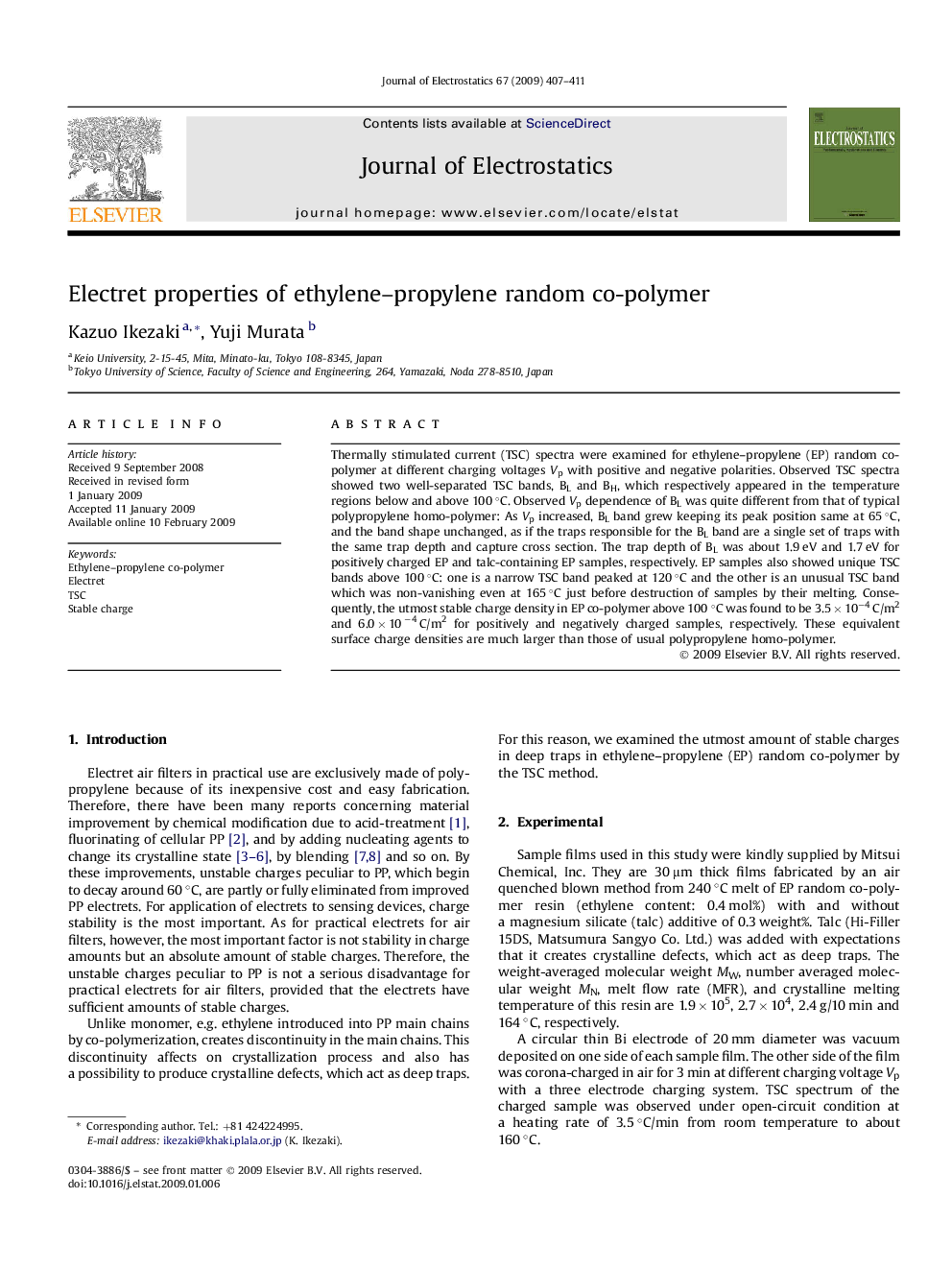| Article ID | Journal | Published Year | Pages | File Type |
|---|---|---|---|---|
| 724702 | Journal of Electrostatics | 2009 | 5 Pages |
Thermally stimulated current (TSC) spectra were examined for ethylene–propylene (EP) random co-polymer at different charging voltages Vp with positive and negative polarities. Observed TSC spectra showed two well-separated TSC bands, BL and BH, which respectively appeared in the temperature regions below and above 100 °C. Observed Vp dependence of BL was quite different from that of typical polypropylene homo-polymer: As Vp increased, BL band grew keeping its peak position same at 65 °C, and the band shape unchanged, as if the traps responsible for the BL band are a single set of traps with the same trap depth and capture cross section. The trap depth of BL was about 1.9 eV and 1.7 eV for positively charged EP and talc-containing EP samples, respectively. EP samples also showed unique TSC bands above 100 °C: one is a narrow TSC band peaked at 120 °C and the other is an unusual TSC band which was non-vanishing even at 165 °C just before destruction of samples by their melting. Consequently, the utmost stable charge density in EP co-polymer above 100 °C was found to be 3.5 × 10−4 C/m2 and 6.0 × 10 −4 C/m2 for positively and negatively charged samples, respectively. These equivalent surface charge densities are much larger than those of usual polypropylene homo-polymer.
